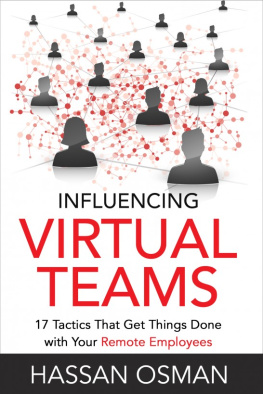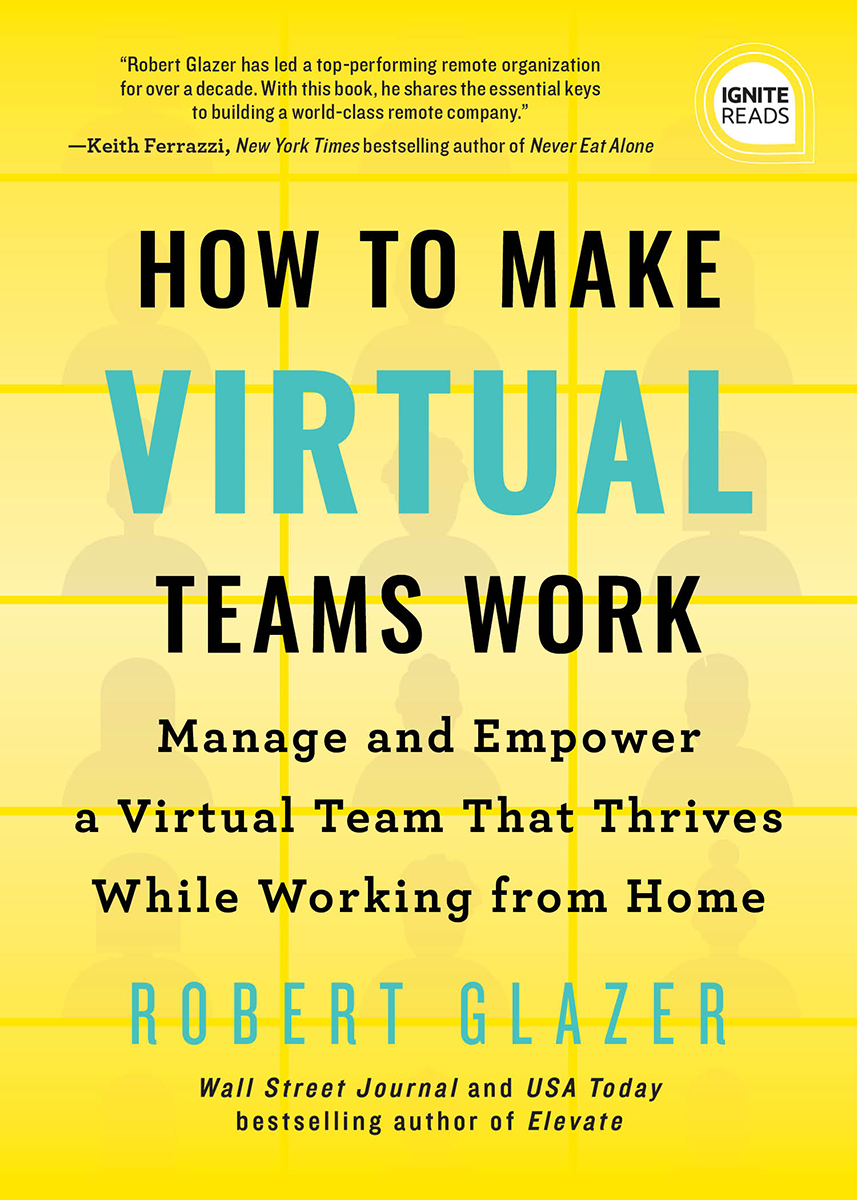Robert Glazer - How to Make Virtual Teams Work: Manage and Empower a Virtual Team That Thrives While Working from Home
Here you can read online Robert Glazer - How to Make Virtual Teams Work: Manage and Empower a Virtual Team That Thrives While Working from Home full text of the book (entire story) in english for free. Download pdf and epub, get meaning, cover and reviews about this ebook. year: 2020, publisher: Sourcebooks, genre: Business. Description of the work, (preface) as well as reviews are available. Best literature library LitArk.com created for fans of good reading and offers a wide selection of genres:
Romance novel
Science fiction
Adventure
Detective
Science
History
Home and family
Prose
Art
Politics
Computer
Non-fiction
Religion
Business
Children
Humor
Choose a favorite category and find really read worthwhile books. Enjoy immersion in the world of imagination, feel the emotions of the characters or learn something new for yourself, make an fascinating discovery.

- Book:How to Make Virtual Teams Work: Manage and Empower a Virtual Team That Thrives While Working from Home
- Author:
- Publisher:Sourcebooks
- Genre:
- Year:2020
- Rating:4 / 5
- Favourites:Add to favourites
- Your mark:
How to Make Virtual Teams Work: Manage and Empower a Virtual Team That Thrives While Working from Home: summary, description and annotation
We offer to read an annotation, description, summary or preface (depends on what the author of the book "How to Make Virtual Teams Work: Manage and Empower a Virtual Team That Thrives While Working from Home" wrote himself). If you haven't found the necessary information about the book — write in the comments, we will try to find it.
A remote book on building a successful virtual culture fromUSA TODAYandWALL STREET JOURNAL bestselling author, Robert Glazer!
Close to twenty-five percent of professionals today work remotely in some capacity (and even more since the start of the pandemic). There are a lot of benefits to companies who employ a virtual workforce: cost savings on office space and other overhead, improved job performance, better employee morale, and a broader pool of talent from which to recruit. However, there are also challenges: communication limitations, social isolation, and managing distractions, among others.
In his leadership management book, How to Make Virtual Teams Work, Robert Glazer, bestselling author of Elevate, taps into his decade of experience managing a virtual officeand winning twenty best places to work awardswhile providing leaders with a step-by-step playbook on how to intentionally build a remote workforce and culture by developing core values that provide guidance in hiring talent who works well remotely, creating comprehensive onboarding plans, using technology to communicate and connect with remote employees, and more. This goes way beyond a typical HR strategy book. By employing these specific organizational behavior strategies, leaders can build a remote environment that thrives and make it one of their key competitive advantages.
Praise for Robert Glazer:
Robert Glazer has led a top performing remote organization for over a decade. With this book, he shares the essential keys to building a world-class remote company. Keith Ferrazzi, New York Times bestselling author of Never Eat Alone
Bob Glazer leads from the heart. When the work week drags you down, his clear-cut advice can lift you up. Adam Grant, New York Times bestselling author of Give and Take and Originals
Bob Glazer has become one of the finest business columnists writing today, and hes done it while building a truly great company, Acceleration Partners. You can get a taste of both from this wonderful book. Bo Burlingham, author of Small Giants and Finish Big
Robert Glazer: author's other books
Who wrote How to Make Virtual Teams Work: Manage and Empower a Virtual Team That Thrives While Working from Home? Find out the surname, the name of the author of the book and a list of all author's works by series.










